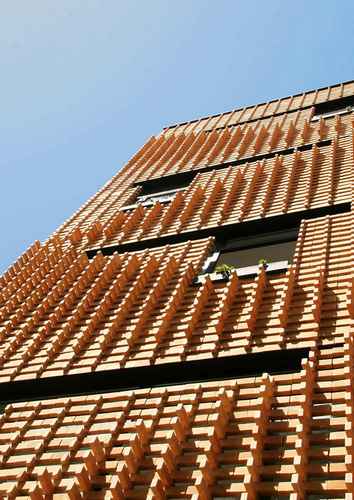
Alireza Mashhadi Mirza علیرضا مشهدی میرزا
documents, images and more information about the Brick pattern house Project. designed in 2011 , residential category. and its compeleted - Alireza Mashhadi Mirza; architect and designer
Project Slides: info, pictures and documents

Brick pattern house
- info
- about
Project info
- Design Year:
2011 - Status:
compeleted - Type:
residential - Area:
310 m2 - Location:
Tehran , Iran - Client:
Alireza Zahed
Awards
- international award:
2012 , Shortlisted in
world architecture festival - local award:
2011, Third place , Grand memar award
Team
- Project Architect:
Alireza Mashhadimirza - design team:
Zahra Poorhadi - Construction:
Ali Baradaran - Mechanical Consultant:
Farpooyan co - Electrical Consultant:
Farpooyan co - Photography:
Habibeh Madjdabadi
About the project
Iranian designer alireza mashhadimirza was shortlisted in the housing category for the 2012 world architecture festival with ‘brick pattern house’, located in the jeyhoom area of Tehran, Iran. Challenged with a low budget and building code restriction the architect decided to create a method that did not require phase two drawings for the project. the result was an attention to details which looked at an earthquake resistant structure, energy saving walls, acceptable acoustic properties, fire safety and functional technical services than a luxurious village cottage.
Limited with space and a local work force with no knowledge of construction methods, the design focused on the exterior and how creative brick could be. Taking influence from traditional architecture, a tri-dimensional wall was created to mitigate the glaring sun. The contemporary mashrabiya covers the entire facade producing a semi-transparent partition providing privacy with no need for interior curtains. In order to communicate the pattern to the craftsmen, a table was established, similar to what carpet artisan’s work with, which indicated all the information and activities of each worker.
The procedure was named ‘method 23’ because everything was associated with that number, from the quantity of rows, pieces, boxes and columns of support. The construction was similar to putting together a large puzzle with each package having a code to identify the location and orientation of the bricks. The kit provided instructions on A4 paper with a chart numbering the items which corresponded to simple diagrams. The end project delivers a message that architecture can happen in an economically and culturally challenged area of the city.
navigation thumbnails















